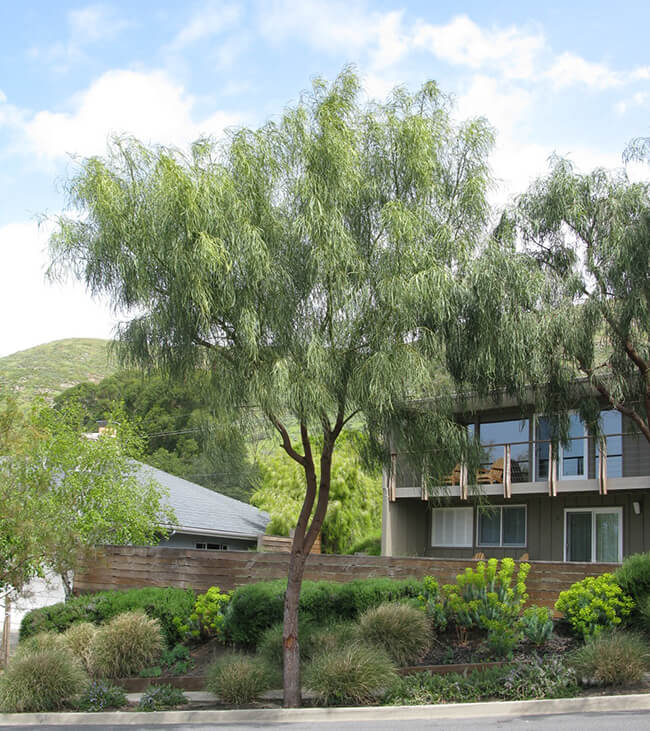Wholesale Division: (818) 316-2000 [email protected]
Retail Division – So Cal Only: (818) 316-2024 [email protected]

Boething Treeland Farms grows over 1,000 varieties of trees, shrubs, perennials and specialty plants on 10 California nurseries to serve the wholesale landscape and nursery industries throughout the Western United States and beyond.
Plant Type: Trees
Evergreen-Deciduous: Evergreen
Overall Mature Size: Medium
Also Grown As: Standard Tree
Mature Height & Spread: 30' x 20'
Natural Growth Habit: Weeping
Native To: Australia/New Zealand
Exposure: Full Sun
Water: Low Water
Flower Color: Yellow
Bloom Time: Spring
Special Features: Attractive Bark / Attracts Birds/Butterflies / Deer Resistant / Desert Conditions / Drought Resistant
Container Sizes: #15, 24" Box, 36" Box
Sunset Garden Zones: 8, 9, 12-24
This Australian evergreen brings a lushness to otherwise arid low desert regions. Naturally open, its yet vertical and narrow form makes it an excellent candidate for tight applications. Flowing foliage sways beautifully with the breeze, hosting clusters of light yellow flowers followed by Seussian white fruits.
This Australian evergreen brings a lushness to otherwise arid low desert regions. Naturally open, its yet vertical and narrow form makes it an excellent candidate for tight applications. Flowing foliage sways beautifully with the breeze, hosting clusters of light yellow flowers followed by Seussian white fruits.